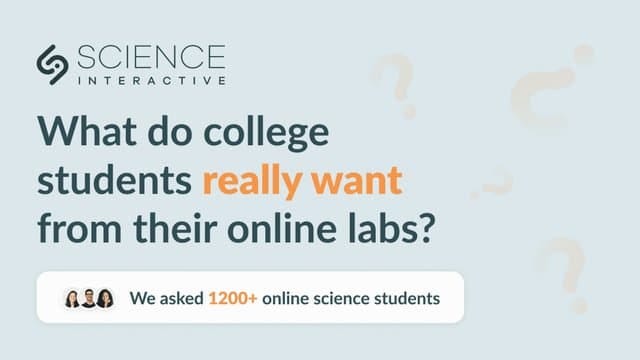Sci-Ed Update 306
Miscarriage causes, vaping effects, piercings' effects on microbiome, new human atlas, tinnitus, virtual meeting fatigue, hypothetical vs. realistic test items, placebo effect with painkillers, more!
Genetic errors are behind more than two thirds of early miscarriages

More than two-thirds of early miscarriages seem to be due to abnormal chromosomes, the packages of DNA within all our cells, in the embryo or fetus. The remaining third are probably also largely due to genetic factors, which we may not be able to detect yet.
Previously, it had been thought that about half of miscarriages were due to these chromosomal abnormalities. Now, a new technique has found that, in fact, the majority of early miscarriages are the result of such problems.
The finding may give some comfort to those who have had a miscarriage, as it shows the event probably didn’t happen because of anything they did, says Masoud Zamani Esteki at Maastricht University Medical Center in the Netherlands.
Read more→ AandP.info/clx
After an Ear Piercing, Your Skin Microbiome Changes in a Fundamental Way
The researchers wanted to take a closer look at how this sudden change in the microbiome environment – potentially shifting everything from the shape of the skin to its temperature – would affect the lives of the microorganisms living nearby.
From the perspective of the bacteria, eukaryotes, and other microscopic critters that call the skin home, a piercing is a cataclysmic, apocalyptic event – like a giant earthquake or a meteor strike – and that was borne out in the microbiome analysis.
"We found that, over time, the new piercing environment was significantly associated with greater biodiversity and ecological complexity, with fundamental differences in the nature of biotic interactions compared to exposed earlobe skin," write the researchers in their published paper.
As with many other places on and in our bodies, the skin microbiome needs to stay carefully balanced to keep us healthy. Studying piercings and their consequences could help us learn more about how to keep that balance in place.
Read more→ AandP.info/sjw
Dissecting the Kenhub Atlas: Insights from Editor Mike Pascoe
Mike Pascoe joins host Kevin Patton in Episode 144 to chat about Mike’s experience in editing the new Kenhub Atlas of Human Anatomy. We go behind the scenes to see how this new kind of anatomy atlas was developed. Let’s see how those decisions get made and how the learning perspective gets incorporated into anatomy manuals. And we explore diverse representation in anatomy images and why we won’t find any eponyms in this atlas. We also have a brief remembrance of our friend David Allard.
00:00 | Introduction
00:45 | Remembering David Allard
04:25 | Introducing Mike Pascoe
06:12 | A New Take on the Human Atlas
19:00 | Debriefing and Predictions Ahead
19:55 | Creating Books
34:25 | Your New Thing
35:44 | More Features of the New Atlas
47:27 | Staying Connected
To listen to this episode, click on the play button above ⏵ (if present) or this link→ theAPprofessor.org/podcast-episode-144.html
Tinnitus Linked to Auditory Nerve Loss

A new study reveals that tinnitus, a common auditory issue characterized by ringing in the ears, is associated with undetected auditory nerve loss. This finding challenges the traditional understanding that tinnitus is solely a result of brain maladaptation to hearing loss.
The study shows that individuals with normal hearing tests but experiencing tinnitus actually suffer from cochlear synaptopathy, a type of “hidden hearing loss.” This discovery paves the way for potential treatments, including nerve regeneration through neurotrophins, bringing hope for millions affected worldwide.
Key Facts:
Tinnitus in individuals with normal hearing tests is linked to undetected auditory nerve loss.
The study identifies cochlear synaptopathy, or hidden hearing loss, as a key factor in tinnitus genesis.
Future treatment possibilities include auditory nerve regeneration, offering hope for a potential cure for tinnitus.
Read more→ AandP.info/tgz
Virtual Meeting Fatigue: Exploring the Impact of Virtual Meetings on Cognitive Performance and Active Versus Passive Fatigue
In this study, we challenge the commonly held belief that virtual meeting fatigue manifests as exhaustion (i.e., active fatigue) resulting from overloading demands and instead suggest that participation in virtual meetings may lead to increased drowsiness (i.e., passive fatigue) due to underload of stimulation.
Using subjective and cardiac measures (heart rate variability), we investigated the relationships between virtual versus face-to-face meetings and different types of fatigue (active and passive) among 44 knowledge workers during real-life meetings (N = 382). Our multilevel path analysis revealed a link between virtual meetings and higher levels of passive fatigue, which then impacted cognitive performance. Additionally, our results suggest that work engagement may act as an individual-level moderator, explaining why some knowledge workers are affected, while others are not.
Given the growing amount of time spent in virtual meetings, these findings emphasize the risks to mental energy and cognitive performance and highlight the protective role of high general work engagement.
Kevin Patton comment→ This is useful for meetings with peers, college meetings, and course meetings.
Read more→ AandP.info/ph0
Chatbot responses suggest that hypothetical biology questions are harder than realistic ones
The biology education literature includes compelling assertions that unfamiliar problems are especially useful for revealing students’ true understanding of biology. However, there is only limited evidence that such novel problems have different cognitive requirements than more familiar problems. Here, we sought additional evidence by using chatbots based on large language models as models of biology students.
For human physiology and cell biology, we developed sets of realistic and hypothetical problems matched to the same lesson learning objectives (LLOs). Problems were considered hypothetical if (i) known biological entities (molecules and organs) were given atypical or counterfactual properties (redefinition) or (ii) fictitious biological entities were introduced (invention).
Several chatbots scored significantly worse on hypothetical problems than on realistic problems, with scores declining by an average of 13%. Among hypothetical questions, redefinition questions appeared especially difficult, with many chatbots scoring as if guessing randomly.
These results suggest that, for a given LLO, hypothetical problems may have different cognitive demands than realistic problems and may more accurately reveal students’ ability to apply biology core concepts to diverse contexts.
The Test Question Templates (TQT) framework, which explicitly connects LLOs with examples of assessment questions, can help educators generate problems that are challenging (due to their novelty), yet fair (due to their alignment with pre-specified LLOs).
Finally, ChatGPT’s rapid improvement toward expert-level answers suggests that future educators cannot reasonably expect to ignore or outwit chatbots but must do what we can to make assessments fair and equitable.
Kevin Patton comment→ I enjoyed the small role I played in this project.
Read more→ AandP.info/0tm
The placebo effect means painkillers may work better with side effects

Drug side effects may not always be a bad thing, for painkillers at least. An inert nasal spray that was presented as having painkilling properties was deemed more effective when it caused a mild burning sensation, suggesting that this boosted the placebo effect.
The placebo effect is when people experience a medical benefit from the belief that they have had some kind of healthcare intervention, even when they haven’t actually received it. The mechanism behind the effect is unclear.
The results suggest that a drug’s side effects could potentially be used to enhance its benefits, but these could also make medicines being tested in placebo-controlled randomised trials seem better than they really are, say the researchers.
Read more→ AandP.info/r3d
4 Things Students Really Want from their Online Labs
This is our inaugural year surveying online learners’ and instructors’ preferences and experiences when it comes to participating in online science courses. A sampling of findings from the student experience are shared here and are the result of survey responses from 1,293 students who participated in online labs during the 2022-2023 academic year.
91% of students said it was very important to them to be able to take their science courses online.
This was consistent for majors, who otherwise wouldn’t have the opportunity to pursue a degree in STEM.
81% of students were satisfied with their online lab experience, regardless of the format of the lab.
Kevin Patton comment→ This is just a snippet from the full article and downloadable full report.
Read more→ AandP.info/sbu
How bad is vaping for your health? We’re finally getting answers
The short-term health impacts of vaping – and some potential long-term consequences – are now quite well-known. What has become clear is that they aren’t all sweetness and light. Let’s start with the e-liquid. All three of its standard ingredients can do immediate harm. Nicotine is addictive and overstimulates the sympathetic nervous system, causing the heart to beat harder and faster and blood pressure to rise, according to the American Heart Association (AHA), which published a scientific statement on ENDS in July. As yet, there is no evidence of this leading directly to heart attacks or other cardiovascular problems, but chronic overstimulation of the heart is known to be a risk factor for cardiac failure.
The sols, meanwhile, can irritate and inflame the airways. Propylene ol and glycerin are both generally recognised as safe by the FDA, by which it means they are non-toxic. However, manufacturers of the chemicals recommend that inhalation be avoided. Short-term exposure can lead to coughing, a sore throat and decreased lung function. Perhaps that is where my morning cough has come from. In studies on the effects of theatrical smoke, long-term exposure to propylene glycol is associated with wheeziness and chest tightening.
Read more→ AandP.info/eb0








